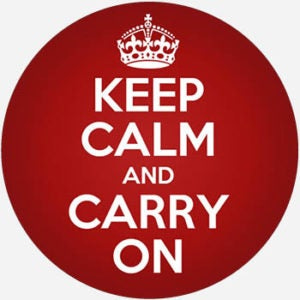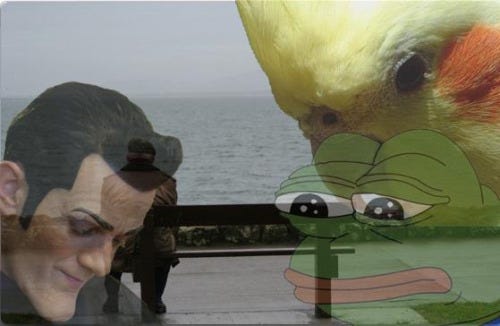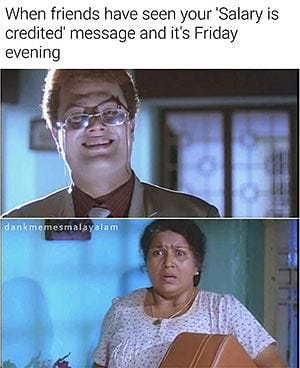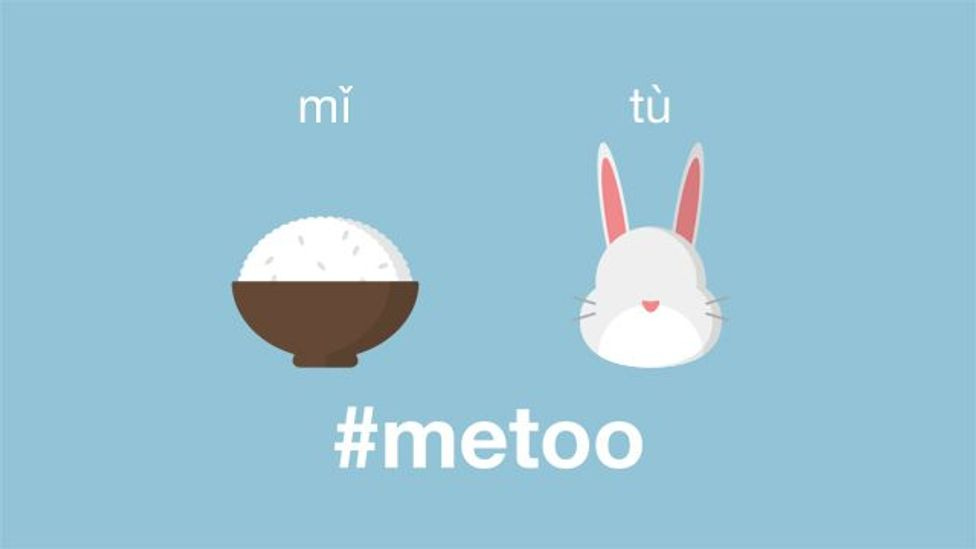The biggest turn off
When someone says "I don't get it" and you have to explain the meme you just shared
Happy Saturday everybody!
I hope you had an amazing week because I had a crazy one (in a good way of course)!
I get the most random thoughts while sipping chaai in the morning. But when I get such thoughts, I don’t just let them go.
I look for answers everywhere (now you know what I do instead of binge-watching on OTT platforms). My search history is full of random questions and I know you can relate to this.
In today’s episode of random thoughts, I was wondering-
Where did memes come from? What would happen if memes were never there? Would we die out of boredom? Would we have a B&W life forever?
Memes today are not just for humor, they are used to highlight social causes, go viral on social media, and are even being used by businesses to drive sales.
Let’s see when and how memes started and how have they stayed relevant over decades.
(BONUS: One brand that’s killing it through meme advertising)
But, first, we need to
KEEP CALM!
Does it ring a bell, already?
It’s the year 2012.
You’re posting this on Facebook and tagging your friends, right before your phone/laptop is confiscated because it’s exam time!
We used the “Keep Calm“ and “Can’t Keep Calm“ memes extensively, but never did we think where this originated from.
British Ministry of Information developed a series of three posters in 1939 to rally and reassure its populace as World War II ramped up, Keep Calm and Carry on was one of the three.
The original poster flashed Keep Calm and Carry On written in white, capital letters underneath an image of a crown on a bright, grabbingly red background.
Who, exactly, coined the slogan is unclear.
Evolution
Of Memes
Before we speak about how memes evolved, it’s important to answer this question -
Well, a meme is an idea or concept majorly bundled in the form of images, videos, animation, hashtags or gifs that represents sarcasm, humor, and seriousness of the subject in an amusing way.
It’s the new way of communication.
It’s the new “love language“ for people who do not really have anything to say or for people who don’t know how to communicate in words.
It’s a representation of inside jokes or even how one is feeling.
It’s simple, let me give you a demo.
Feeling sad? Instead of writing “I am sad“ like a normal human would do, amp it up by sending-
But, why the word “meme“?
In French, the word “même” translates to “same”.
The word “meme“ was first coined by Richard Dawkins in his book The Selfish Gene.
The original concept of a “meme” was analogous to a “phoneme,” the smallest unit of sound in speech, or a “morpheme,” the smallest meaningful subunit of a word.
(Okay, no more semantics, I promise)
In his book, Dawkins mentioned:
“We need a name for the new replicator, a noun that conveys the idea of a unit of cultural transmission, or a unit of imitation.”
The Shift
In the meaning of meme
The word “meme“ has undergone a semantic shift over time.
In this internet era, memes and the meaning of memes are constructed by different users in different contexts. People explicitly construct them and then post them for commentary.
Now, memes are used in literally everything- from communicating how you’re feeling to even selling a product or service.
People are even turning tragic and upsetting things into something humorous called memes.
Want to be relatable and relevant? Make memes.
Want to popularize a show or a movie? Make a meme
Feeling bored? Watch memes
Want to re-ignite a long-lost friendship or love? Share memes
Don’t know what to say to your crush? Send memes
It fits- everywhere!
For Social Causes
There’s more to memes than meets the eye.
Want to spread an idea, a belief, a cause or a movement?
Resort to memes, but make it relatable.
The British Government printed 2.5 million copies of Keep Calm and Carry On to calm the civilians- this was back in 1939.
Thanks to the internet, memes have become more accessible, and so has awareness.
Internet helps memes to grow, spread and mutate.
Ad Memes
They say that a picture can speak a thousand words.
Well, I say that a meme (static or video) can speak a 3 minute Ad commercial.
And brands- small and big, are leveraging memes to go viral.
Most modern memes are cultural inside jokes.
They’re a way of connecting with people across the internet through unique photos that become instantly recognizable and/or relatable.
Memes collect emotions, ideas and actions into an easy-to-translate format.
Zomato & Memes: A love-story
Zomato is acing the meme game.
I am sure you remember this trend that everyone was hopping on to.
And who was the trend-setter? Zomato
Not only is Zomato posting static and video memes, it is also using trending phrases as clickbait-style messages as app notifications.
Zomato uses the simplest memes and images to communicate messages uniquely.
It is not only good at creativity and humor, but it is equally good at timing.
Because what’s better than humor?
Humor at the correct time!
Right from festivals to special occasions, Zomato leaves no chance to engage the audience on its posts.
Not just advertising, it also uses memes to introduce the new things that are happening at Zomato like-
This was when Baba ka Dhaba went viral on all the socials.
Khel gaye, Zomato!
Memes have successfully stayed relevant in changing times.
In fact, memes have helped brands and creators stay relevant.
People love humor and relatability- and that’s exactly what memes provide.
What is your favorite meme?
Let me know.
Until next time,
Toodeloo!















Good One. 👌👌
These days people relate with a meme much quicker than they relate with any other thing. Even government institutions and other organizations are using memes to spread awareness. Delhi Metro is a prime example.